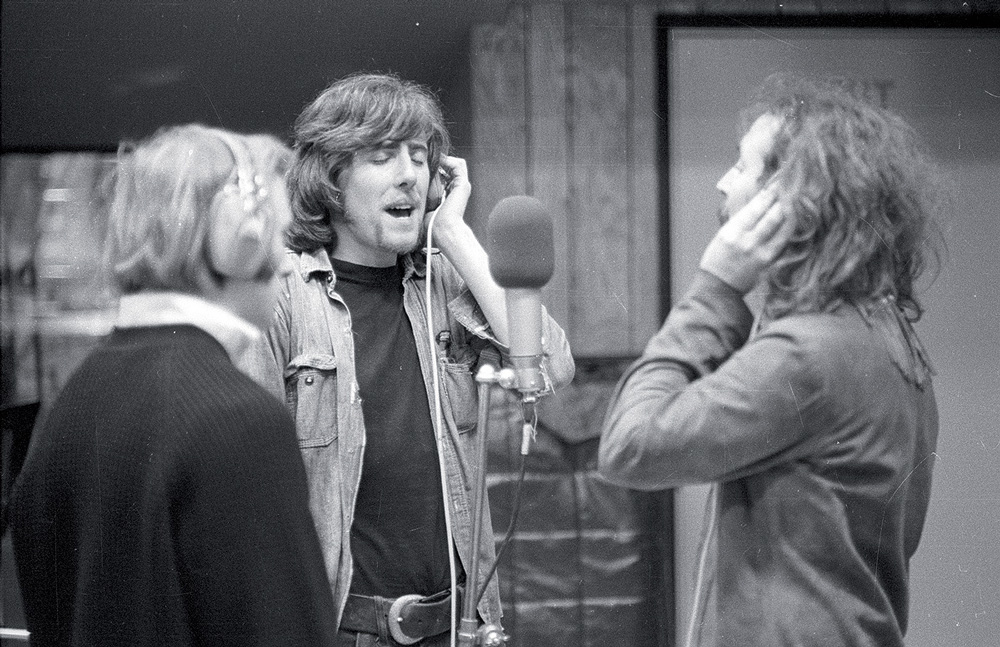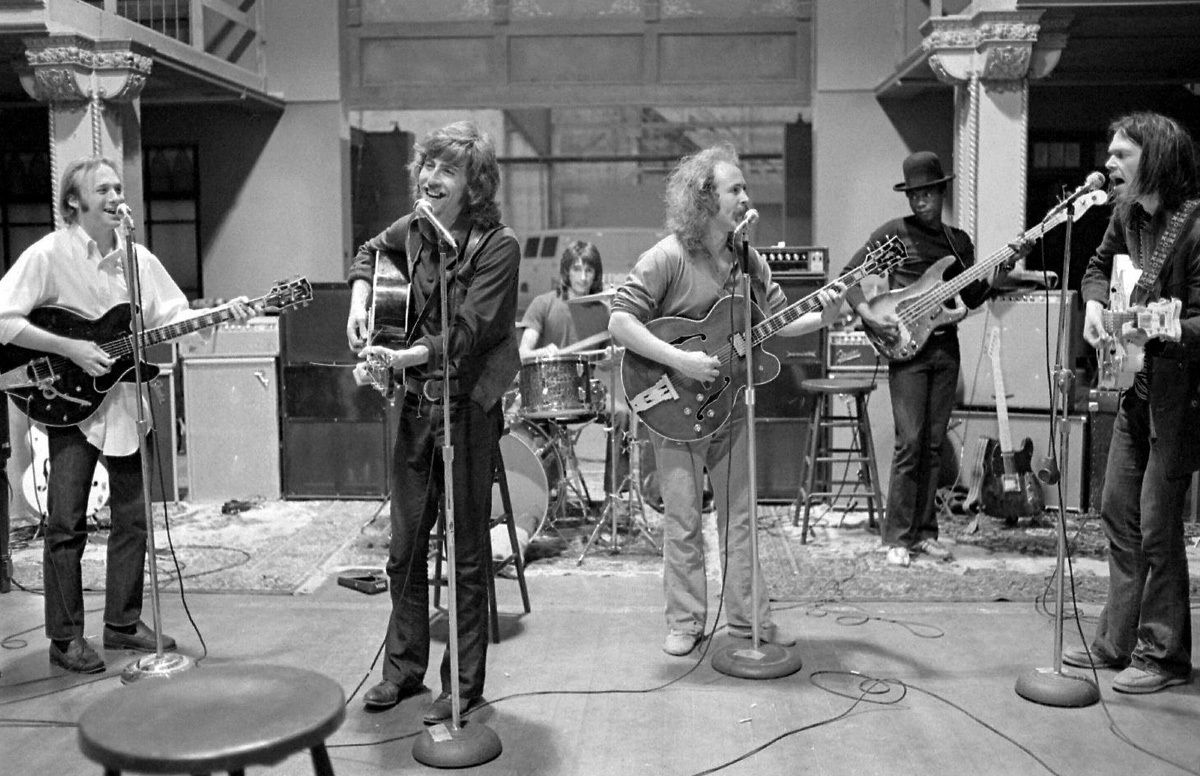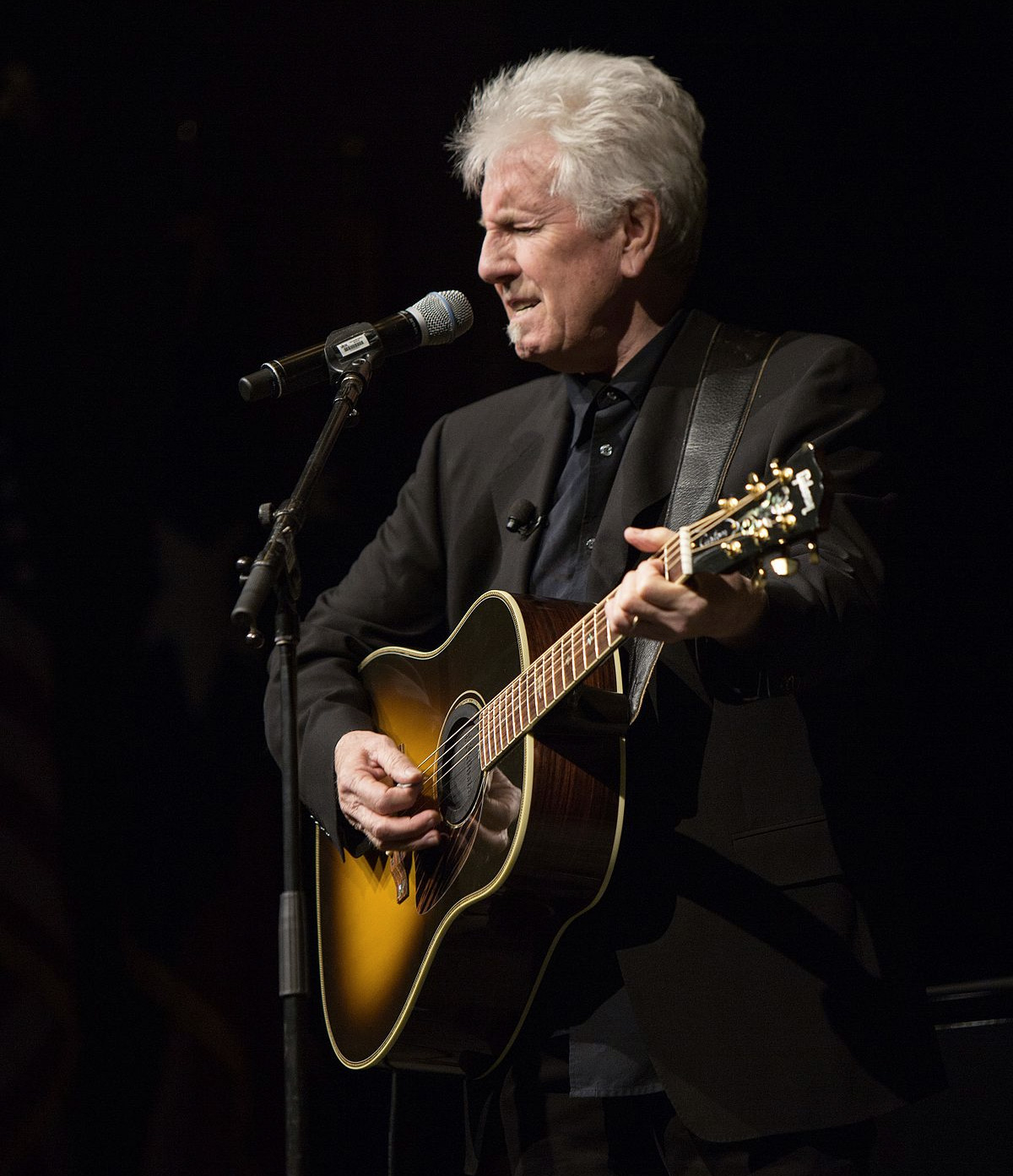"I sounded young, I sounded determined, I sounded as if I thought I had something decent." That's Graham Nash's equanimous reaction to hearing himself on the new Over the Years anthology. Dominated by recordings from the late '60s and early '70s, the collection dips into some of the most beloved material from his Crosby, Stills & Nash days as well as his solo career and his duo outings with David Crosby. But in addition to featuring historic tracks like "Teach Your Children," "Our House," et al., Over the Years includes a disc's worth of demos capturing his songs' first furtive steps into the world.
"I haven't changed much in my life," says Nash, assessing the time passed. "I've always been a curious kid. I've always wanted the best, I've always wanted to get the job done." Part of the appeal of the two-disc collection is hearing how the job was done, following some of the songs in their evolution from foal to sure-footed stallion stage. "To make it different I wanted to put on the demos," Nash explains. "I've been the archivist for the band for many years, and I knew exactly where they are."
On the bulk of those early tracks, location was key. Wally Heider Recording's L.A. and San Francisco locations were the headquarters for Nash and his cohorts in those days. The now-famous studios provided just the right environment for CSN to capture their trendsetting folk-rock sound. They began work on their 1969 debut album in Studio III at the Hollywood location. That room was modeled after the legendary United Western Recorders, which was the creation of Heider's mentor, the "father of modern recording," Bill Putnam. Nash describes Heider's Hollywood spot as "a very simple room… maybe 22' X 30' with a control room at one end."
"We had done some work with a Studer 8 track [tape machine] at Stephen's house," remembers Nash. "We brought it down to Heider's and we recorded that first record on 8 track." Nash recalls the studio's vintage gear being a key component of the sound, including a Neve board and Neumann U 87 microphones.
But the man who played midwife to the sounds CSN were making, engineer Bill Halverson, was a crucial part of the process too. The acoustic guitar sounds and vocal blend he got on tape with the band became sought-after by legions of artists on the burgeoning West Coast folk-rock/singer-songwriter scene, and made Halverson a man in demand. "Once you heard that sound then," confirms Nash, "if you were a vocal band at all, you wanted that sound."
"I think 'Suite: Judy Blue Eyes' was the first thing that we tried to record," says Nash. "And Bill Halverson had been, I think, working with The Beach Boys, and had a Fairchild limiter plugged into the system. Stephen plugged his Martin D-45 into the system and he got a sound that he had been searching for a long time. It was crunchy, it had bite, and Bill kind of apologized that he had left some previous data in the stream, and Stephen said, 'Don't touch it! My guitar sounds great!'"
For all of Halverson's expertise, though, it was CSN's firm artistic vision that really defined the sound of classic self-produced records like 1969's Crosby, Stills & Nash and 1970's Déjà Vu, which added Neil Young to the artistic equation.
"We knew what we were doing," allows Nash. "We kept people out, no musician's union people came, nobody from the record company came, apart from [Atlantic Records co-founder] Ahmet Ertegun. They just left us alone. Because obviously we'd sold a lot of records between The Byrds and the [Buffalo] Springfield and The Hollies. Get out of our way and just let us do it. That's what Ahmet Ertegun brought to the picture, because he allowed us to do that."
Of CSN's singular vocal harmony sound, Nash says, "We wanted to make our three voices sound like one. So we knew how to balance our voices before it ever got to the tape machine. And of course once it got to the tape machine, you do what you do with it. We double-tracked our voices occasionally. But that sound that Crosby, Stills & Nash created [their first time singing together] in Joni's living room was amazing to me and David and Stephen. I mean, I know The Hollies and the Springfield were good harmony bands, but this was very different."

Perhaps the most important factor in CSN maintaining their self-contained status early on was Stills' multi-instrumental abilities. "It was very obvious from the very beginning that Stephen Stills was a great, great musician," confirms Nash. "He played a lot of the instruments on that first record. Me and Crosby, of course, played rhythm guitar on our stuff, on 'Guinevere' and 'Lady of the Island,' 'Pre-Road Downs,' and 'Marrakesh,' 'Long Time Gone,' etc. But Stephen played lead guitar, he played some rhythm guitar, he played bass, he played piano, he played B-3 organ, and occasionally some percussive stuff. So then, what do you do when you've finished the record and you know it's gonna be a hit, and you figure you're gonna have to go out on the road... who's gonna play all those instruments that Stephen played? That's how we ended up with Neil."
By the time Neil Young tacked the "Y" onto CSN, the band was working in Wally Heider's new San Francisco studio, in a room designed to replicate the one that served them so well in Hollywood. It became a hub for the Bay Area scene. "I think the Dead were in that one," remembers Nash, "and the Airplane were in another, and me and David and Stephen and Neil were in another studio [at Heider's], all at the same time. That's how we got Garcia on pedal steel on 'Teach Your Children.' It was a pretty interesting scene up there, because we all knew each other, and we were all making records in the same building."

With all those guitarists in the band, there was a lot of artillery around. "We had all our Martins of course," Nash says, "I brought my black Epiphone acoustic guitar that I sprayed black and I put on a double pickguard to remind me of the Everly Brothers' Gibson guitars, which I couldn't afford when I first got a guitar. That's the one on 'Marrakesh' and later 'Teach Your Children' and 'Lady of the Island.' Stephen was playing a Gibson L-5 on 'Wooden Ships' that David and I had bought him because he played so well on the rest of the record, plus his great acoustic guitar, which I think is a Gibson body and a Gretsch neck that he had put together. And Stephen played Stratocaster of course."
From the beginning, when all those alpha males were in the studio together, finding the best songs took precedence over sparing anybody's feelings. "We had a 'reality rule,' which went this way," explains Nash, "we only recorded songs that all three of us loved."
Even when a song made the cut, the going wasn't always smooth. Nash's original demo for "Teach Your Children," for instance, lacked the country bounce we've come to associate with it. "When I played Stephen that demo," recalls Nash, "he said, 'That's a fine song. Don't ever play it like that again, that sucks!' I said, 'Why?' He said, 'Well, you sound like Henry VIII. It needs this country swing that I've got in my right hand here,' and he turned it into a hit record."
That wasn't the only time Stills' studio sensibilities helped turn a Nash tune into a classic. "Marrakesh Express," for instance, was a song that started life while Nash was still with The Hollies. "Somewhere there's a track of 'Marrakesh Express' done by The Hollies in the tape vault of EMI at Abbey Road," he reveals. "No vocals, but a track. 'Marrakesh Express' needed the energy of a train, the chugging of the wheels, and in The Hollies' version there is no train. [Stills] was doing the overdub of the guitars that are in harmony there, and he said, 'You know what, you and David go out and get a burger.' So me and Crosby left for about an hour, and we came back and it was done."

By the mid-'70s, the band had imploded, and for a while at least, only Crosby and Nash were still working together. The elegant, atmospheric title track of their 1975 duo album, Wind on the Water, had been part of CSN's abortive 1974 sessions, when a piqued Stills came after the tape of the tune with a razor. Fortunately, when Crosby and Nash convened minus Stills the following year at L.A.'s venerable Village Recorders, they approached the song anew. Both the demo and the finished product appear on Over the Years.
Village Recorders had previously been a Masonic temple. "On the top floor there's still a huge room with a stage that would have been the pulpit," says Nash. "Village Recorders is a great studio. I did my last studio record, This Path Tonight, at Village. I even knew who I wanted to do the orchestration [for 'Wind on the Water'], because I had heard on a Simon & Garfunkel record many years ago a song called 'Old Friends'—it was on Bookends. And the string arrangement is so beautiful and so spacey that I had it in the back of my mind that when I did 'Wind on the Water' I wanted ['Old Friends' arranger] Jimmie Haskell to do the string arrangement—and he did."
Over the Years covers nearly half a century, from the 1968 demos Nash made while still living in London to his aforementioned 2016 solo album, This Path Tonight. Incorporating the output of CSN, CSNY, CN, and plain old N, it's an impressive highlight reel of Nash's post-Hollies achievements. Part of Nash's motivation in assembling it is an entirely appropriate legacy-building impulse.
"If anything, I want people to recognize that I'm a decent songwriter," he confesses, "and that the songs that I've created have touched millions of hearts, and I'm glad about that." But the man whose pop know-how has hooked generations on his enduring, infectious tunes maintains a more munificent motivation too. "I want people to be smiling when the last track finishes," says Nash. "That's important."

